Roy Wegerle
MY OWN STYLE, MY OWN ROUTE
Roy Wegerle has been described as “The First Great American Player.” Born in Pretoria, South Africa Roy grew up playing soccer in an apartheid stricken country. Having his first trial with Manchester United at the age of just 17, Roy enjoyed an illustrious career throughout the world. Beginning in the USA at South Florida College and then the Tampa Bay Rowdies, Wegerle played for historic clubs like Chelsea, Blackburn, Queens Park Rangers and many more. Not to mention a member of the U.S Men’s National team where he played in two World Cups. Even with his levels of success, Roy could be seen as a player before his time. Marked by his skill, free spirit and inventiveness, Wegerle seems to fit the build of a more free form of the modern Premier League rather than the more brutal and direct version of the late 80’s and 90’s. Despite his sometimes overlooked abilities, Roy succeeded in making his own path, remembered as a player who played from his heart and to his enjoyment first and foremost.
We sat down with Roy to connect the dots throughout his amazing and adventurous career. Here is Roy Wegerle: My Own Style, My Own Route.
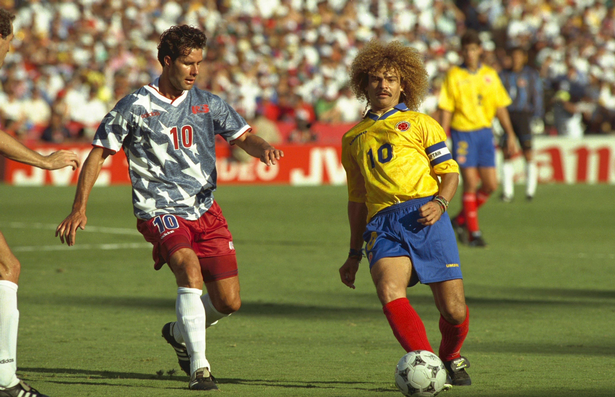
Q: First off, we were connected through our former Coach Iain Byrne who is a legend in our eyes. How do you know Byrne? How good was he as a player? Honest answers only!
Roy: Ian is a legend in many people’s eyes so I can understand how you feel about him! We met and played together at the club I grew up with, Arcadia Shepherds. After, he was signed as a pro from a team called Durban City. I always thought Iain was a very good midfielder. He has a very good first touch, vision and could deliver an attacking pass early, which would create scoring opportunities for us forwards. I recommended him, and got him a trial for a MISL team where I played, before I signed for Chelsea, and was very surprised they didn’t sign him. After speaking with some of the players who were on the team they thought he deserved a contract. I always thought he was able to play at a higher level but unfortunately it didn’t work out that way.
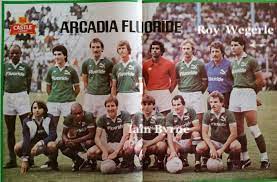
Q: You were born and grew up in Pretoria, South Africa; how did your upbringing shape your interest in football and was it popular to play the sport during your childhood?
Roy: I had two older brothers who played professionally so I followed them into the game and started playing at about eight years of age. I grew up during the Apartheid system in South Africa so blacks and whites were not allowed to associate in sports. However, when I was about 15 years of age, those laws started to loosen up and we were able to compete against each other. Black players had a very different culture, mentality and skillful way of playing the game which I embraced. I just wish I had been around it for longer. Some of the players I saw, and the skill they displayed on the field, truly had to be seen to be believed. I never witnessed anything like it again through all my travels as a professional player.
Q: You went from trialing with Manchester United to then deciding to play college soccer at the University of South Florida. Can you discuss a bit about how these opportunities came about and how did you make this decision?
Roy: As a 17 year old, myself and another player Raymond Perlee were given an opportunity to go to Manchester United for a two month trial. Unfortunately, I got injured during the second week and only became fit again a week before I had to leave. This was obviously a huge disappointment for me! If I was smart and maybe had some good advice, I should have come home straight away and see it up for the following year. That way I could have been healthy and prepared properly for what I had seen at United. The mentality, playing and training style as well as the attitude of an institution and club like that was completely different to what I was used to. However, I think if I had stayed healthy or had come back healthy later on, things would have been different. Anyway, everything happens for a reason and that’s just the way it was. I still had two years left to finish high school at the time and my two brothers were playing in the states. Steve in Florida and Geoff in California. Since my chance at United had passed by I set my sights on the US but I always believed I would make it back to the English 1st division some day (before it became the Premier League). My brother’s team at the time, the Tampa Bay Rowdies, trained at the field of the University of South Florida in Tampa. My brother spoke to the University Coach about me joining once I had finished high school in South Africa and that’s basically how I got to America.
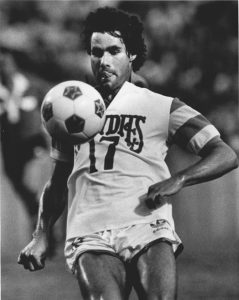
Q: You played for the Tampa Bay Rowdies in the NASL as well as for the Tacoma Stars in the MISL for 2 years and then made the jump to Chelsea. With some help from your former manager Rodney Marsh at Tampa Bay, tell us how that arrived and was it always your goal to get back to England and prove yourself?
Roy: I spent 1 and a half years at the University of Florida playing in the college system but as I thought about it, being a professional at the very highest level was what I was shooting for. I was confident in my ability, but getting to play in England or Europe was never going to be easy. Rondey Marsh was a fantastic footballer and crowd pleaser and was the coach of the Rowdies at the time. He offered me a professional contract and shared in my wish of getting me to a higher level. After a year of playing in the NASL, he set up for Chelsea F.C to take a look at me. Fortunately for me, all went well and I signed for them in July of 1986
Q: One of the most inspiring stories we’ve learned about you was that you were turned down by QPR, to then be signed by them for 1million pounds later on. Did you feel a sense of satisfaction in it coming full circle like this?- Also, what was your mindset when going into trials and how did you bounce back from failures or rejections? Such as with QPR and Manchester United and especially so early in your career.
Roy: One thing for sure in any walk of life is that everyone will face “ups and downs.” Sometimes the “ups” come too easily and that can become detrimental to some personalities.They might not appreciate it if they haven’t really done enough to warrant it. Conversely, people get hit with a lot of “downs” but keep the belief and achieve success in the end. We have all seen it in one way or another. I never took my “highs” or my “lows” too seriously but paid a lot of attention to what it would require to achieve my objective. Thankfully it all worked out in the end.
Q: You’ve spent time in both the 1st and 2nd tiers of English Football. How would you describe the differences in the leagues and what stands out to you as the biggest contrast to today’s game?
Roy: I joined Blackburn Rovers FC from QPR almost halfway through the season when they were near the top of their league and favourites to be promoted to the top tier. I had fallen out with the management at QPR and a chance to work with Kenny Dalglish (who was the new manager at Blackburn) seemed like an opportunity I should take. We ended up getting promoted but it wasn’t easy. The lower tier club obviously don’t have the financial budget so playing surfaces were either mud baths or almost like rock hard ice rinks for most of the season. Not how you see premier league facilities now. Even in the top leagues where I spent most of my time during the 80’s and 90’s, playing surfaces were very difficult to play on during the winter months. I’m sure people my age remember how it was.
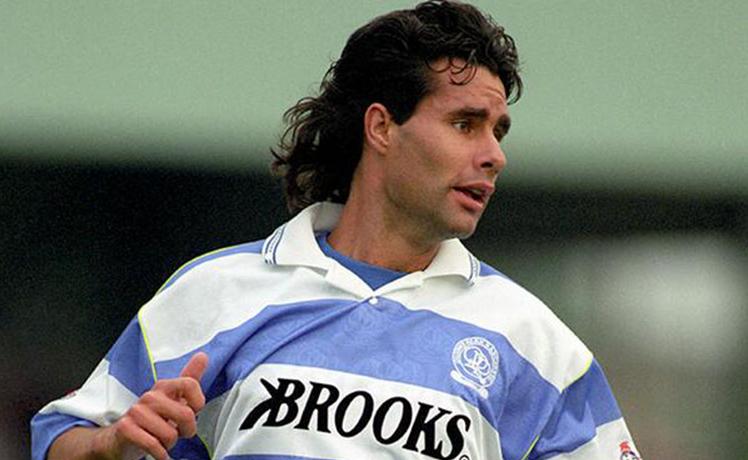
Q: Staying on this topic for a little, we want to focus a bit on your playing style as it relates to your playing era. From watching videos and reading articles you seem to float on the pitch, highlighting skill and inventiveness. Your former manager Rodney Marsh at the Tampa Bay Rowdies said “ He played with a complete love and passion and desire for the game, like a great artist, a painter. He laughed a lot when he played”. How would you personally describe your game? Do you feel your game would have been better suited to this current era? And do you think the managers and culture in England were not so open to your risk taking and creativity during a more structured and direct footballing era?
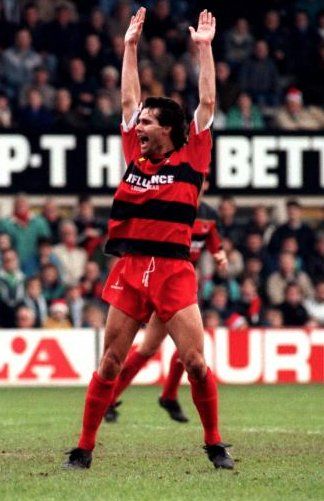
Roy: My playing style was really never suited to the “English way” of play or management, but I loved the tradition, atmosphere and excitement of the English 1st Division. That was what I was exposed to as a kid growing up in South Africa. I would watch games and highlights of all those matches and it became a dream of mine to play there someday. I never saw anything of the French, Italian, German, or Spanish leagues, but I think it’s likely that I would have been more technically suited and appreciated as a player in these leagues. And probably more successful, but who knows. I saw many talented players at different clubs cast aside because they were specialists in attacking and creative play but couldn’t defend well enough. That was the way it was back then.
Q: That goal for QPR against Leeds is regarded as maybe your best ever and possibly one of the best ever at Elland Road. Ten seconds, six players. Pretty ‘Messi’ like. Do you think that was your best ever? Is that one you think about to this day?
Roy: I don’t like talking about that goal but it’s nice to get compliments about it. Like you said, it happened so quickly and instinct just takes over. Many people have told me the goal I scored later in that game was better because it was the one that won us the game!
Q: You made your National Team debut in 1992. With potential to play for West Germany (through your father), for England and then surprisingly enough the United States. What ultimately led to your choice of the US and what did you see in that project?
Roy: I was unable to play for my country of birth because of the Apartheid politics. This banned us from competing in international events (Olympics, World Cup etc.) so being able to play in a World Cup never actually entered my mind. In the early 90s I was playing well and was one of the most expensive forwards in the top tier of English football. This created a lot of interest from the German and English national team managers and many of the national newspapers were calling on the manager to include me in the England squad. Which he actually spoke with me about. All of this interest alerted the new US national team coach Bora Milutinović as he came to London a couple times to convince me to commit to the US (I was married to an American which qualified me). I went the way I went since I knew the US was where I was going to live after football and it seemed like the right thing to do. My only disappointment was that I was an old man (relatively speaking) almost 30 yrs old with 8 knee surgeries before I got to play on a world stage. Regardless I was very grateful for being given an opportunity!
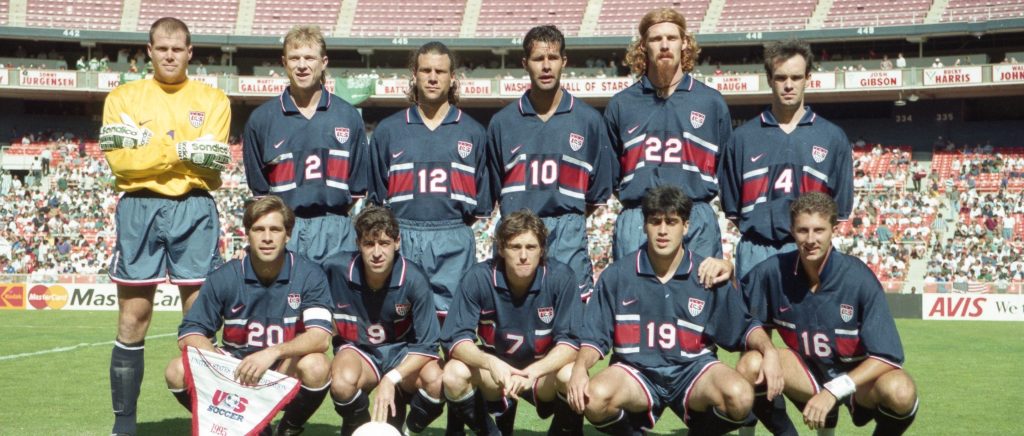
Q: 2 World Cups, 3 Gold Cups, 3 Copa Americas, countless qualifiers and friendlies. What was it like to represent the USA on such a grand level and you describe the lead up to your first World Cup?
One moment that sticks out to us is when you played Brazil in round of 16 in Stanford on independence day. Do you have any memories from this day?
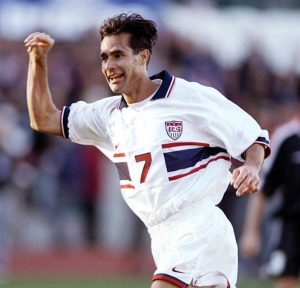
Roy: It was an honor to represent the U.S and I always treated it as such. The only semi-regret I have is that I was an “old man” (relatively speaking!) at 30 years old when I was able to compete on a world stage. I also had close to 10 knee surgeries by that time which had changed my playing style and certain abilities. My worst knee injury came four months before the 1994 World Cup. I tore my ACL during a premiership game in London and a knee specialist told me I would never be able to recover in time to play in the World Cup in June (just four months away). Anyway, I rehabbed as much as I could and got to about 50% of my full strength. When the FIFA deadline for each country to name their 22 man roster approached (I think it was 3 weeks before the tournament), the coach, staff and I discussed whether I should be included. I told them the best I could be was about 75%. In the three weeks left before our first match vs Switzerland I believed my chances of playing in a World Cup were gone! However, I was included with the hope of entering games in the last 20 min or so, to make a difference if we were in a losing position. I did make an appearance in all 4 of our games but couldn’t make a difference. We lost 1-0 to Brazil in the knock-out stage in front of 100,000 fans in Palo Alto, California on July 4th. The late Robin Williams was a huge soccer fan and came into our locker room 30 mins before kick off to loosen the mood.This was a good day for soccer in the USA even though most Americans didn’t really know much about the sport or what the World Cup was.
Q: Back to life in England, you had a £1.1 million move to Blackburn which was a joint record fee by a Second Division club at the time, After the promotion at Blackburn, which you mentioned earlier, you struggled to find regular playing time the next year, battling with the likes of Premier League all-time leading scorer Alan Shearer for starts. How do you look back at that 2nd year for Blackburn and do you wish things had gone differently?
Roy: I knew within the first 2 months of being at Blackburn that I wasn’t going to be there long. The manager and I didn’t agree on how I should play. He wanted more or less a “one or two touch” forward player who would then get in the box early to score from a crossed ball. I felt I had more to offer than that and didn’t enjoy playing that way. So needless to say my appearances were limited and I left soon after.
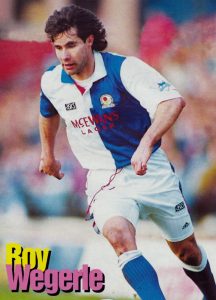
Q: After that you played with Coventry City for 3 seasons, as well as 4 years in the MLS with the likes of the Colorado Rapids, D.C United and the Tampa Bay Mutiny. Some years that unfortunately were affected by injuries. How do you describe the impact of these injuries to your career and your love for the game? Did it impact your decision to hang up the boots in 1998?
Roy: Yes knee injuries plagued me pretty much my entire career. Starting with that trial at Manchester United as a 15 year old. I had 12 knee surgeries during my playing days and each time they repair an issue, it slows you down, limits you, and you lose a step. It was very frustrating because I was unable to do a lot of things I was certainly capable of doing, regarding speed and change of direction with the ball. In the end I decided to retire because I no longer enjoyed playing with the limitations. And the enjoyment unfortunately, just wasn’t there anymore.
Q: Since retirement you’ve had stints as an MLS interim coach and as a pundit for ESPN. What is your connection to the game now? and are there any new ambitions within football? Outside of football we’ve also seen you turn your ambitions over to golf over the years, even reaching professional status, has it always been a passion of yours and did you use the same determination in this new sport as in football?
Roy: When I retired after the ‘98 World Cup, I took 6 months away from the game to try and figure out what my next steps would be. I joined a golf club thinking it would be a nice distraction from soccer as I had always enjoyed hitting a golf ball as a kid. I really got hooked and started taking it seriously as I got better with practice and regular play, I got myself to a level where I competed in a few professional events. Which I still do from time to time now. I tried the pundit option but I found myself sitting in a dark studio all day analysing the tape for hours and it just wasn’t what I enjoyed doing at all. I was grateful to ESPN for the opportunity and my former teammate Alexi Lalas took the opportunity after me and he has done a good job.

Q: Some last questions on the football side of your life as we are enamored with your career and the heights that you have reached. Who is the best player you have ever played with and against?
Roy: Jomo Sono was without question the most skillful and talented player I ever saw and played with. The world never saw him play because South Africa were banned from international competition. He would have been a household name.
Des walker was a defender with Nottingham Forest and played for England many times. He was strong, very quick and difficult to beat. I had a lot of respect for him as a player.
Q: Finally, our brand ‘Footwork’ is defined by the phrase “Make Your Own Path” essentially meaning to follow your dreams and not be held to “normal” routes if they do not fulfill you. You have certainly created your own path, for instance you were referred to by the New York Times as a “Man of Many Lands.” Do you find this notion important in your life and do you feel it relates to your journey and career at all?
Roy: I like your “Footwork” brand and what it stands for. I left home at 17 to pursue my career and dream. There were no cell phones, no internet, so I would only speak with my parents and family every 2 or 3 months. It taught me to grow up quickly. I made many mistakes along the way but in the end it all worked out and I am truly thankful. That was my path since it was my only option of achieving my goal as a footballer. There are many ways to live your life and everyone has a different way. But I believe learning to be independent and making your own way in life gives an individual a feeling of accomplishment which is very hard to duplicate.
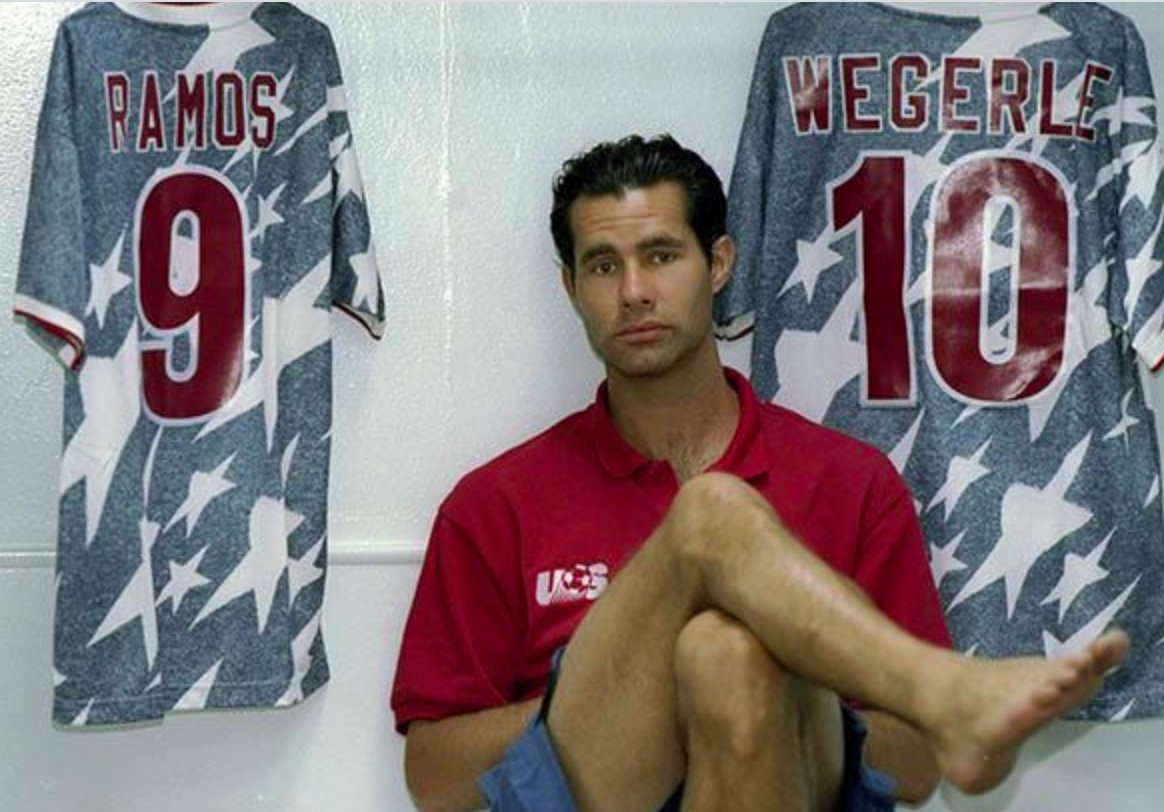
Until Next Time
